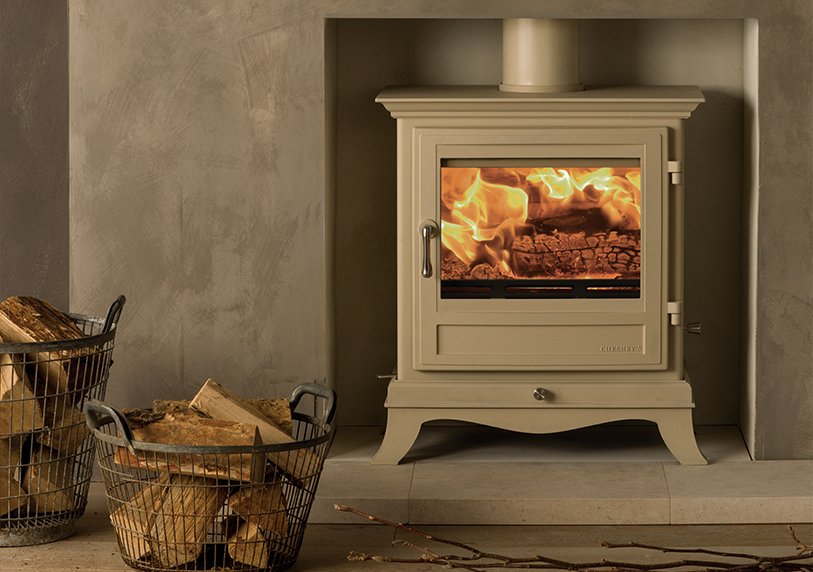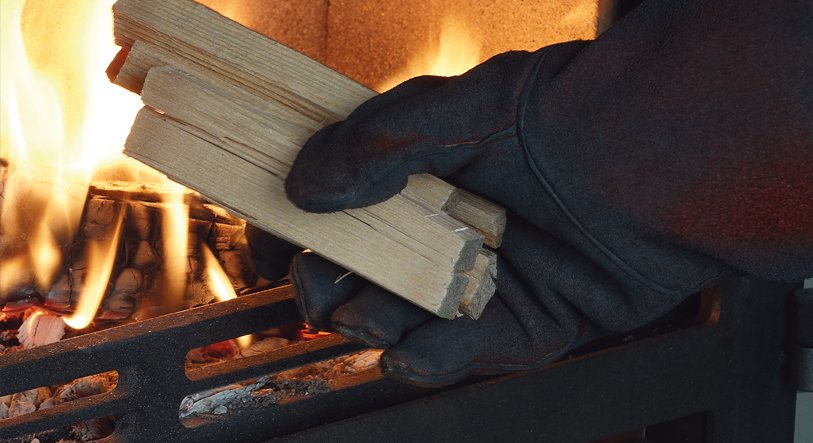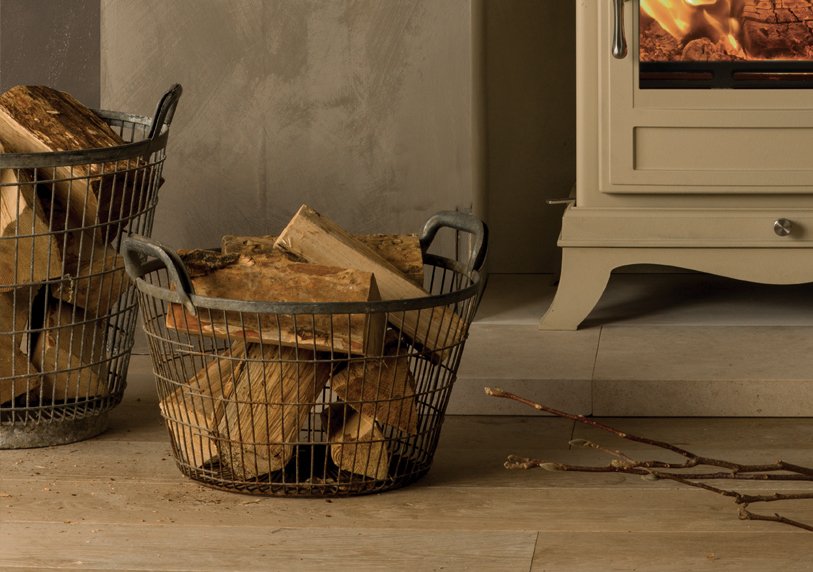

Maintaining your log burner: Wood burning stoves are a classic solution that combines traditional design and energy-efficient heating to add an undeniable cosiness, warmth, and style to your home.
Getting the most out of your wood burning stove is something every customer is keen to understand. In order to so, it’s important to know how to use and maintain it correctly. In this guide, we will show you how to maximise a wood burning stove lifespan. We’ll also cover all the benefits that make wood burning stoves such a timeless, eco-friendly heating method for your home.
MANUFACTURING
Innovative manufacturing is what makes a Chesneys stove so special. Your wood burning stove will consist of several components. These include:
Firebox: This is the main compartment of the stove, where wood is loaded and lit.
Door: Allows access to the firebox for loading wood and lighting the fire, with a glass window to view the flickering flames.
Air controls: These allow you to moderate your stove’s air supply, to control how quickly your logs burn.
Flue: A pipe attached to the top of the wood burner, allowing smoke to escape through your chimney.
Chesneys wood burners all include our award-winning clean-burn and airwash technology, which reduces emissions from the stove by re-igniting and burning off any harmful particulates that would otherwise escape. It’s one of the cleanest ways you can heat your home this winter.
Our modern wood burning stoves prioritise efficiency above all else. A Beaumont and Belgravia in your home will boast an A+ efficiency grade, with an 83.9% net heat output (for comparison, most wood burning stoves average at around 70% output).
THE BEST WAY TO USE A WOOD BURNING STOVE
There’s no need to worry about cleaning your stove after each use, as wood burns better on a bed of ash. To light the stove, build a small stack of kindling roughly in the shape of a hash (#), with a firelighter in the middle and a single log placed bark side down on the top.
Leave the air vents fully open after lighting the fire. This provides an ample supply of oxygen, which helps the fuel catch. Once the first log is burning well, add a second log and close the primary air vent to halfway. This gradually decreases the oxygen and controls the size of the fire, keeping your fuel burning longer.
A fire that has nearly gone out can be revived. Simply add more kindling, open the primary air vent, and add a new log after the kindling has caught. If you find your stove getting too hot, close the primary air vent so that the fire gradually dies down.

MAINTENANCE FOR WOOD BURNING STOVES
If your wood burning stove isn’t used frequently, it won’t require much maintenance to upkeep. A stove used only a few times a month will require less upkeep than one used multiple times a week. Inspecting and caring for your stove regularly will keep it safe, clean and easy to use. Always wait for your stove to cool down completely before attempting to check, clean or maintain it.
Although wood burns better with a bed of ash, allowing it to pile up can cause problems. For this reason, it’s a good idea to remove ash every few days. You should also check the baffle plate (sometimes known as a throat or deflector plate) for soot deposits, cleaning it weekly to keep your wood burner efficient and safe.
When cleaning the glass, use a wire wool or a piece of damp newspaper dipped in the ash. Take care to avoid the rope seal around the edges of the glass. Finally, ensure the product in your stove has dried completely before lighting your fire.
One of the most important things you can do for your wood burning stove is hire a professional chimney sweep twice a year. This will prevent creosote and soot from building in your chimney, potentially causing blockages and chimney fires.
THE BEST FUEL FOR WOOD BURNING STOVES
Choosing the right kind of wood for your stove will prevent it from becoming damaged, and reduce the amount of maintenance required for it to work efficiently.

Always season (dry out) your wood for at least a year before use. Freshly felled wood comprises up to 60% water. Burning it in this state isn’t only less efficient: it also releases more pollutants and causes creosote to build in your stove and chimney. Only burn wood when the moisture content is below 20%, with bark that comes away easily in your hand, and a “ready to burn” label. You can also purchase a moisture meter to read your wood.
Some of the best fuels to burn in your wood burning stove include ash, birch, hazel and oak. So long as they are properly seasoned, these woods burn slowly, split easily and create fewer sparks than other kinds of wood, making your wood burning stove more environmentally-friendly.
You can discover our full range of wood burning stoves here. Alternatively, view them in your nearest stockist to be inspired in person. For more updates follow us on Facebook, Twitter, Instagram or Pinterest.
Need help?
If you need more information or some assistance making a selection from our large range of products, don’t hesitate to get in touch.
Stoves
Chesneys have a range of accessories that include contemporary and traditional fire tools, fire screens and a selection of interior panels
